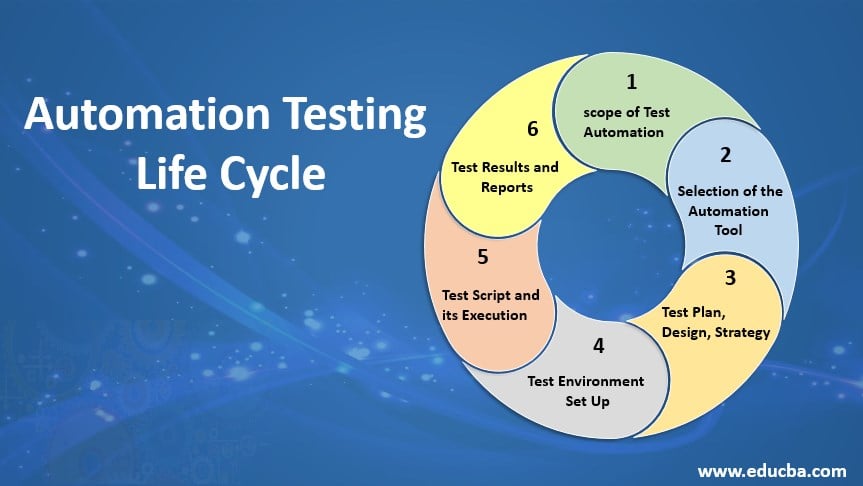Automation Testing Frameworks: Simplifying Complex Testing Scenarios
Automation Testing Frameworks: Simplifying Complex Testing Scenarios
Blog Article
From Handbook to Automated Screening: A Comprehensive Overview to Transitioning Efficiently and Successfully
In the realm of software testing, the change from handbook to automated processes has actually become a significantly vital change for organizations looking for to boost effectiveness and precision in their testing techniques. The journey from guidebook to automated testing is not without its obstacles, but when approached purposefully and with a clear plan in mind, the advantages can be significant.
Benefits of Automated Evaluating
Automated screening provides countless advantages, improving performance and precision in software application growth processes. One main advantage is the considerable decrease in screening time. Automated tests can be run concurrently on multiple devices and running systems, considerably speeding up the testing phase contrasted to hand-operated screening. This increased effectiveness permits faster responses on the quality of the software, allowing developers to identify and deal with problems without delay.
In addition, automated screening makes certain a greater degree of precision in finding issues. Given that automated examinations comply with predefined manuscripts, human mistake is lessened, causing even more trustworthy test results. Consistency in screening is additionally enhanced, as automated tests carry out the exact same steps exactly each time they are run. This consistency is crucial in ensuring that all functionalities of the software program are completely evaluated, decreasing the probability of undiscovered bugs sliding with to production.
Picking the Right Tools

First of all, evaluate your purposes and needs. Recognize the range of your task, the modern technologies included, and the capability of your group. This evaluation will help you determine the abilities and attributes you call for in your screening tools.
Second of all, take into consideration the compatibility of the tools with your existing procedures and systems. Smooth integration with your existing software program advancement lifecycle is crucial to ensure a smooth change to automation.
Furthermore, review the scalability and adaptability of the devices. As your screening needs advance, the devices must be able to adjust and fit changes properly.
Finally, factor in the assistance and community around the devices. Robust assistance and an energetic user area can offer beneficial sources and help when implementing automated screening. By meticulously thinking about these facets, you can choose the right tools that straighten with your demands and established the stage for an effective change to automated testing.
Creating Effective Test Manuscripts

When crafting examination manuscripts, it is important to consider the certain requirements of the software application being tested and make sure that the manuscripts deal with all crucial capabilities. Clear and descriptive calling conventions for test manuscripts and examination cases can improve readability and maintainability. In addition, incorporating mistake handling devices within the test scripts can help in determining and addressing problems without delay.
Additionally, arranging examination manuscripts into modular elements can boost reusability and scalability, reducing redundancy and improving performance in test manuscript maintenance. Routine evaluations and updates to test scripts are important to keep rate with developing software demands and capabilities. By following these concepts, testers can create durable and reliable examination manuscripts that add substantially to the success of automated screening procedures.
Integrating Automation Into Workflows
By perfectly incorporating automated testing devices like Selenium or Appium into the software program development lifecycle, groups can achieve faster responses on code modifications, leading to quicker pest detection and resolution. This assimilation allows for continual testing throughout the advancement procedure, guaranteeing that any kind of issues are determined early on, resulting in greater software top quality. Appropriate assimilation of automation tools needs cooperation between advancement, screening, and operations teams to develop a unified operations that optimizes effectiveness and performance in delivering premium software application items.
Ensuring a Smooth Shift
Effectively transitioning to automated screening entails meticulous planning and cautious implementation to make the most of and reduce interruptions effectiveness in the software program growth procedure - automation testing. To ensure a smooth transition, it is important to begin by carrying out a thorough analysis of the existing screening processes and recognizing locations where automation can blog bring one of the most significant benefits. Involving with all stakeholders at an early stage at the same time, including developers, testers, and project managers, is essential for garnering support and buy-in for the automation campaign
Interaction is crucial throughout this transition stage. Clear interaction of the goals, benefits, and assumptions of automated screening assists Homepage to handle any resistance or concerns that may emerge. In addition, supplying sufficient training and resources for team participants to upskill in automation tools and strategies is important for ensuring an effective shift.

Conclusion
To conclude, transitioning from handbook to automated screening provides many advantages, consisting of increased efficiency and dependability. By choosing the proper devices, composing efficient test manuscripts, and incorporating automation perfectly right into workflows, companies can make certain a smooth and successful change. It is vital to welcome automation as a beneficial property in software program screening processes to improve overall top quality and performance.
In the world of software application testing, the change from guidebook to automated procedures has become a significantly essential shift for organizations seeking to boost effectiveness and accuracy in their screening methods. Automated tests can be run at the same time on numerous gadgets and operating systems, considerably speeding up the testing stage contrasted to hands-on testing. Uniformity in testing is additionally enhanced, as automated tests implement the exact same steps specifically each time they are run.To guarantee the effective execution of Our site selected screening tools, the production of efficient test scripts plays an important function in validating the performance and efficiency of automated processes - automation testing. By adhering to these principles, testers can develop effective and durable test manuscripts that contribute substantially to the success of automated testing procedures
Report this page